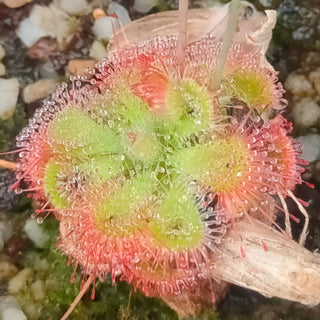Echinacea angustifolia
NARROW LEAF CONEFLOWER BLACKSAMSON
- Unit price
- / per
This is possibly the best echinacea for medicinal use!
Echinacea angustifolia, the narrow-leaved purple coneflower or blacksamson echinacea, is a species of flowering plant native to North America, where it is widespread across much of Canada and the central United States, with additional populations in surrounding regions, to Arizona, New Mexico, Texas, and Louisiana in the south, including Kansas, and Oklahoma,
Echinacea angustifolia blooms in late spring to mid-summer. It is found growing in dry prairies and barrens with rocky to sandy-clay soils.
Echinacea angustifolia has a number of unique medicinal properties that have been proven to assist in helping the immune system, decrease blood sugar level, and prevent the proliferation of cancerous cells. Many Native American groups used this plant for a variety of medicinal purposes, including pain relief and relief of colds and toothaches.
The plants are deer resistant.
Type: Hardy perennial
Hardiness zones: 3-9
Height: 100 cm, 40"
Location: Sun or part shade
Seeds per packet: 10
Sow just under the surface of the soil and water in. Leave them at room temperature for 6 weeks. This helps break the phytohormones which inhibit germination. They will not grow yet. Then a cooling period is required. Cover them with plastic and place in a fridge for 80 days. Be sure they stay moist. After the cold stratification period they are then brought back to a cool room (15-18C, 59-68F) for them to germinate. Germination can be erratic, generally 30-90 days after the warming period for most seeds, though some can take longer.
Echinacea angustifolia
NARROW LEAF CONEFLOWER BLACKSAMSON
- Unit price
- / per
Multiple secure payment options available.
Adding product to your cart
You may also like
This is possibly the best echinacea for medicinal use!
Echinacea angustifolia, the narrow-leaved purple coneflower or blacksamson echinacea, is a species of flowering plant native to North America, where it is widespread across much of Canada and the central United States, with additional populations in surrounding regions, to Arizona, New Mexico, Texas, and Louisiana in the south, including Kansas, and Oklahoma,
Echinacea angustifolia blooms in late spring to mid-summer. It is found growing in dry prairies and barrens with rocky to sandy-clay soils.
Echinacea angustifolia has a number of unique medicinal properties that have been proven to assist in helping the immune system, decrease blood sugar level, and prevent the proliferation of cancerous cells. Many Native American groups used this plant for a variety of medicinal purposes, including pain relief and relief of colds and toothaches.
The plants are deer resistant.
Type: Hardy perennial
Hardiness zones: 3-9
Height: 100 cm, 40"
Location: Sun or part shade
Seeds per packet: 10
Sow just under the surface of the soil and water in. Leave them at room temperature for 6 weeks. This helps break the phytohormones which inhibit germination. They will not grow yet. Then a cooling period is required. Cover them with plastic and place in a fridge for 80 days. Be sure they stay moist. After the cold stratification period they are then brought back to a cool room (15-18C, 59-68F) for them to germinate. Germination can be erratic, generally 30-90 days after the warming period for most seeds, though some can take longer.
















































